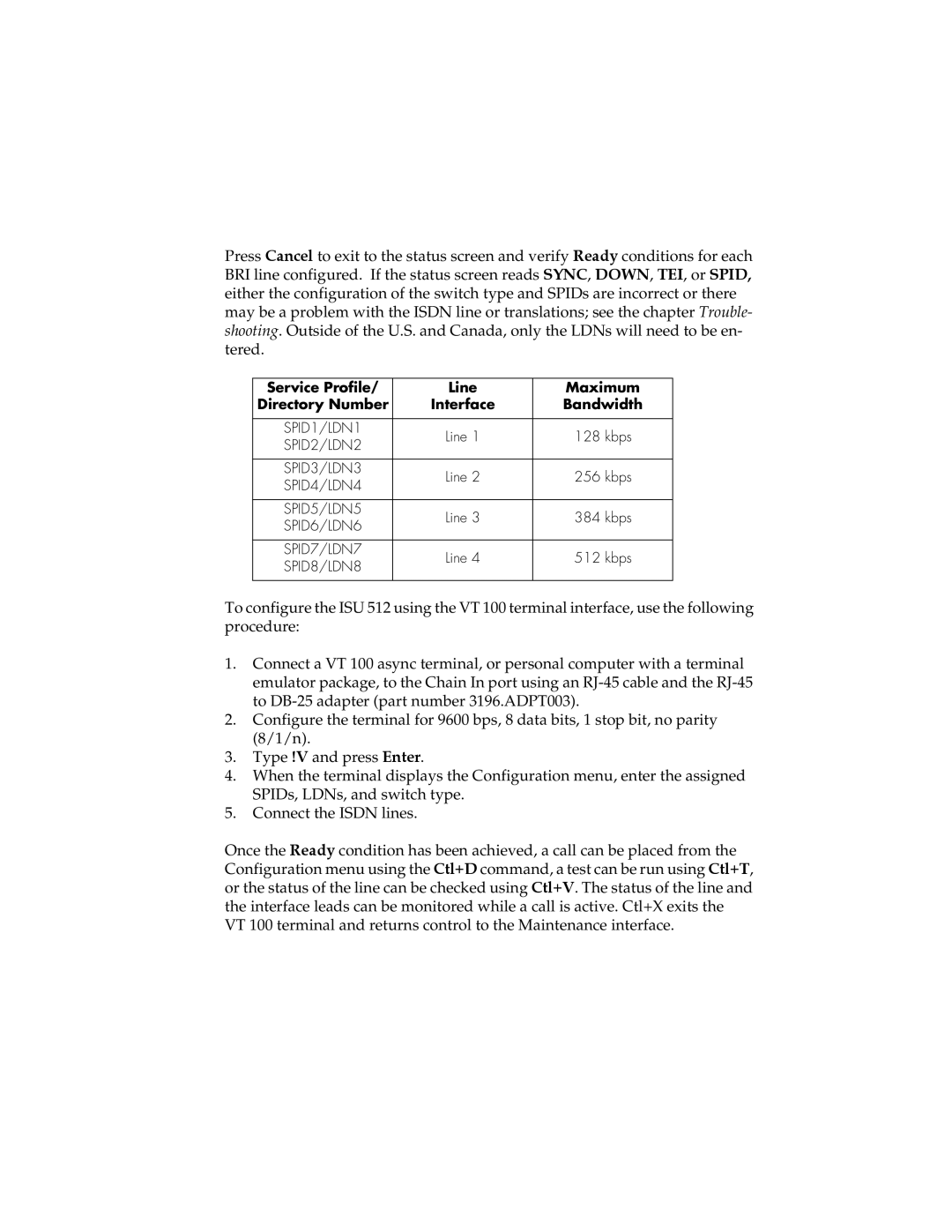Press Cancel to exit to the status screen and verify Ready conditions for each BRI line configured. If the status screen reads SYNC, DOWN, TEI, or SPID, either the configuration of the switch type and SPIDs are incorrect or there may be a problem with the ISDN line or translations; see the chapter Trouble- shooting. Outside of the U.S. and Canada, only the LDNs will need to be en- tered.
Service Profile/ | Line | Maximum | |
Directory Number | Interface | Bandwidth | |
|
|
| |
SPID1/LDN1 | Line 1 | 128 kbps | |
SPID2/LDN2 | |||
|
| ||
|
|
| |
SPID3/LDN3 | Line 2 | 256 kbps | |
SPID4/LDN4 | |||
|
| ||
|
|
| |
SPID5/LDN5 | Line 3 | 384 kbps | |
SPID6/LDN6 | |||
|
| ||
|
|
| |
SPID7/LDN7 | Line 4 | 512 kbps | |
SPID8/LDN8 | |||
|
| ||
|
|
|
To configure the ISU 512 using the VT 100 terminal interface, use the following procedure:
1.Connect a VT 100 async terminal, or personal computer with a terminal emulator package, to the Chain In port using an
2.Configure the terminal for 9600 bps, 8 data bits, 1 stop bit, no parity (8/1/n).
3.Type !V and press Enter.
4.When the terminal displays the Configuration menu, enter the assigned SPIDs, LDNs, and switch type.
5.Connect the ISDN lines.
Once the Ready condition has been achieved, a call can be placed from the Configuration menu using the Ctl+D command, a test can be run using Ctl+T, or the status of the line can be checked using Ctl+V. The status of the line and the interface leads can be monitored while a call is active. Ctl+X exits the VT 100 terminal and returns control to the Maintenance interface.
